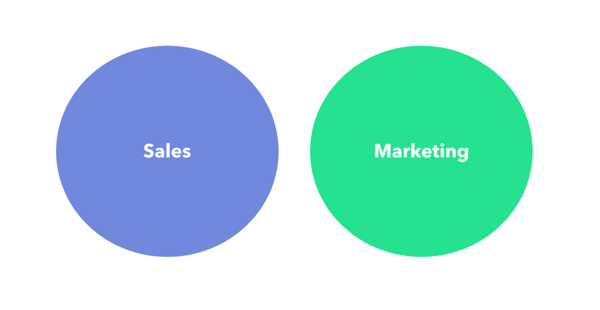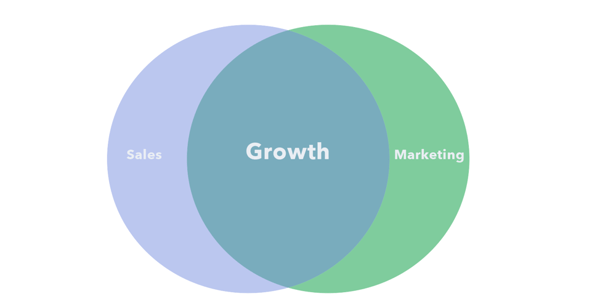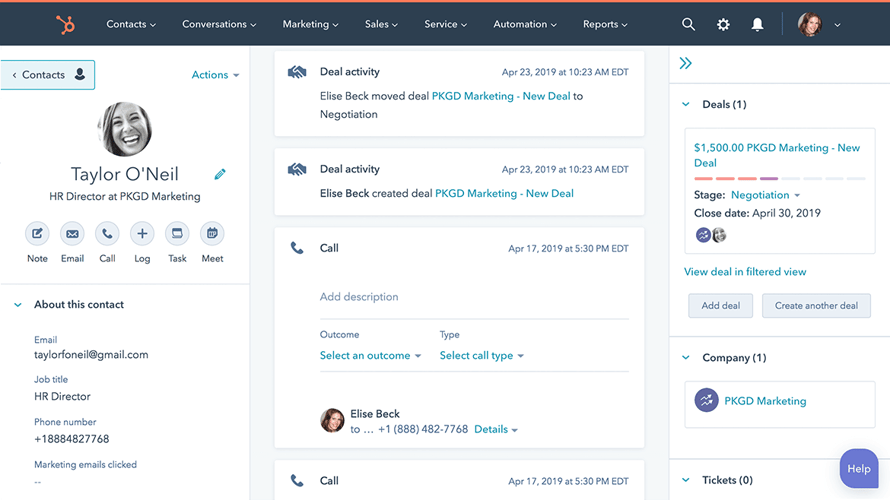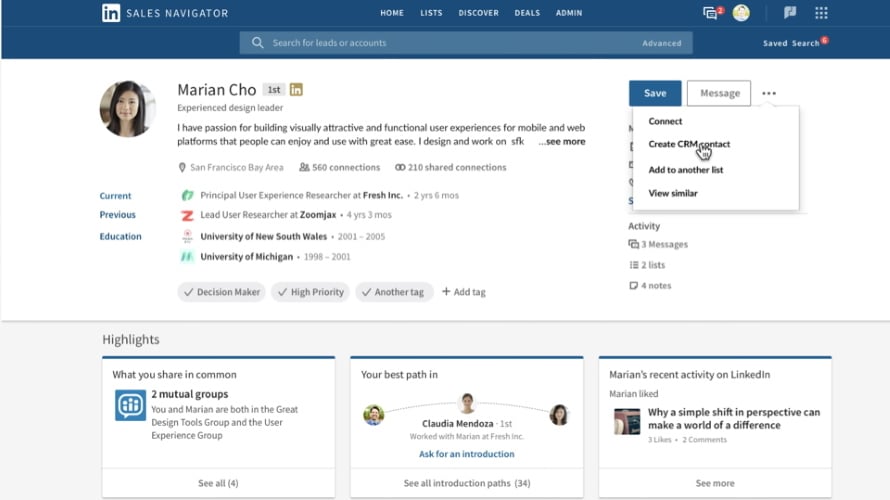
How to Build a Winning B2B Sales Enablement Strategy in 2021
By Austin LaRoche, ATAK Interactive CEO
B2B businesses today operate in a new reality. 82% of B2B buyers today spend more time in the research phase, extensively evaluating a product or service before purchasing. Buyer power has increased and as such, B2B businesses have to adapt to this new buyer journey and integrate new techniques to win and retain these customers. This is where sales enablement comes in.
Today’s buyers have a strong preference to buy from sellers that can add value and help them with their purchase decision. In fact, 74% of buyers choose to move forward with the sales rep that was the first to share value and insight. So with sales enablement, the marketing and sales teams are able to work together to deliver this value and convert their prospects into actual buyers.
What is Sales Enablement?
But first, what is sales enablement? Sales enablement is a strategic process of equipping your sales team with the tools, content, and information they need to efficiently convert leads and close more deals. At its core, it is a collaboration between both marketing and sales. Marketing provides resources and collateral that, in turn, empower the sales team as they interact with potential buyers. With the right toolkit, your sales team can create engaging experiences, both remotely and in-person, for prospects who are increasingly looking for a higher degree of personalization throughout their buyer journeys.
Why B2B Companies Should Care About Sales Enablement
All marketing and sales departments have the same goal: to drive sales and revenue for the company. But, traditionally, these two teams have worked separately, causing marketing and sales to be siloed. Each team ends up focusing on different target consumers to pursue, ultimately, impeding each other’s abilities to attract and convert qualified leads. Studies have shown that when sales and marketing are misaligned, companies lose 10% of revenue or more each year.
 Sales enablement creates a bridge between marketing and sales. With the marketing team by their sides, sales reps are able to access the right content at the right time to successfully engage their prospects throughout the buying process. And the numbers are proof. When sales and marketing work well together, businesses:
Sales enablement creates a bridge between marketing and sales. With the marketing team by their sides, sales reps are able to access the right content at the right time to successfully engage their prospects throughout the buying process. And the numbers are proof. When sales and marketing work well together, businesses:
- Are 67% better at closing deals;
- Generate 208% more revenue from their efforts; and
- Have 36% higher customer retention and 38% higher sales win rates.

Growth is a joint effort. Through sales enablement, each team receives a clearer understanding of who they are targeting and how the journey looks for their prospects. Your marketers no longer need to waste time and resources developing content that will not resonate with customers. Instead, they will begin to develop high-quality collateral, like case studies and whitepapers, designed to help the sales team add value to their relationships with leads and drive quicker conversions, especially when remote selling. It’s critical to remember that sales and marketing are partners working toward the same goal, rather than two different teams.
So why do B2B companies need a sales enablement strategy? The short answer is this: because a sales team empowered with the right toolkit from the marketing team will convert more leads and, ultimately, generate more revenue for the company
How to Build a Winning Sales Enablement Toolkit in 2021
To build a winning B2B sales enablement strategy in 2021, your marketing team needs to assemble a toolkit, filled with resources and content that will enable your sales team to target the right buyers and engage them throughout the buyer journey, whether remotely or in-person. From sales automation to customer success, the right sales enablement tools streamline outreach, lead management, deal management, and customer communication for a seamless buying process.
A robust sales enablement toolkit will contain the following tools and content:
Sales Enablement Software
A sales enablement software gives your marketing and sales teams a complete overview of the sales pipeline and allows them to manage all their collateral from a central location. It ensures that your sales representative can find the proper content at any time, submit it to prospects, and track engagement within that piece of content.
A sales enablement software simplifies:
- Outreach automation: automated and personalized email sequences that outreach and follow-up to nurture and connect with leads as well as close deals;
- Lead management: access to tools such as live chat, email tracking, and meeting scheduling, to engage with and close interested contacts;
- Sales pipeline management: CRM database tracking contact details and past interactions as well as tools to track the progress of customer lifecycles and potential deals; and
- Remote sales management: a centralized location that allows sales reps to easily access, present, and share the latest branded materials, anywhere and anytime.
With the correct sales enablement software, sales and marketing teams are able to work together to deliver timely, relevant, and on-brand content to prospective buyers. We recommend the following sales enablement tools to include in your toolkit:
HubSpot

HubSpot is one of the top sales enablement software (and the one we use!). It connects all sales and marketing efforts into an all-in-one sales platform for easy cross-team collaboration. When combined with its free CRM software, HubSpot’s sales tools track all relevant buyer data and interactions, allowing the sales team to manage the sales pipeline on a deeper level. HubSpot’s Sales Hub features:
- Automated email workflows that streamline outreach while keeping messaging personalized
- Email integrations that track all conversations for easy lead management
- Custom email templates for sales outreach and contact nurturing
- Robust segmentation capabilities for contacts and companies to create hyper-targeted lists
- Personal calendar integration to simplify meeting scheduling
- Analytics tools that track which pieces of content resonated with your buyers and how many seconds they viewed each page of a proposal
LinkedIn Sales Navigator

LinkedIn Sales Navigator is a sales intelligence platform that helps the sales team access the full extent of LinkedIn as a platform for digital selling. With Sales Navigator, sales teams are able to target the right prospects and engage decision-makers with personalized outreach. Its main features include:
- Lead recommendations based on your target accounts
- HubSpot Integration to organize your pipeline and track accounts you connect with
- Advanced lead and company search and export capabilities
Sales Enablement Content
Did you know as much as 80% of marketing content goes unused by the sales team? In many cases, it’s because the content is wrong; it simply doesn’t address the right challenge the buyer may be having. Research shows that 95% of buyers purchase from sellers who offer relevant content at each step of the buying process. That’s why having the right type of content is crucial. The right content will facilitate meaningful conversations and optimize your customer experience.
Personalized Sales Decks and Interactive Collateral
Generic sales decks no longer work as more prospects expect a one-to-one selling experience. In fact, 64% of B2B decision-makers reported they won’t engage with a salesperson if the communication is not personalized. With a personalized sales deck, your sales reps can tailor the messaging to specifically reveal how your product or service can address the buyer’s unique needs. And by showing that they understand a prospect’s needs, a personalized sales deck will help build trust and move the prospect one step closer towards conversion.

Sales Playbook
A sales playbook arms your sales reps with all the content and strategies they need to close a deal. Since sales reps spend 40% of their time searching for or creating content, creating a sales playbook that outlines all the messaging, questions, and resources needed will exponentially decrease time wasted on searching. With ready-made content, your sales team can focus on selling and closing deals faster. Plus, training new sales reps becomes far quicker and easier with a sales playbook since it contains information on your buyer personas and the most effective techniques.
Case Studies
A case study is one of the most powerful pieces of content you can have in your toolkit. It highlights your previous customer’s success and how your product or service helped them achieve their business goals. More buyers are researching a company before committing (82% of buyers, to be exact), and seeing the experience of a previous buyer can be the key to engaging these prospects. With a customer case study, your sales reps can demonstrate to a prospect the actual benefits of your product or service.
Thought Leadership
Thought leadership content is a great resource for attracting and educating prospects, which makes them the perfect addition to your sales enablement toolkit. Accessible in a wide range of formats–from blogs to webinars to white papers, thought leadership exemplifies the knowledge and leadership a sales team has in a given industry. These pieces of content must be compelling, have a strong point-of-view, and educate the buyer. By having a strong leadership message, your sales team can build credibility and trust with your prospects.
Email Templates and Sales Scripts
Email templates and sales scripts are other important tools for sales enablement. Ready-made email templates can streamline the creation of follow-up emails, outreach emails, and check-in emails to further nurture leads while sales scripts can ensure that the sales team hits the key points in any conversations.
Remote Selling
Traditional ‘face-to-face’ sales interactions are disappearing and remote selling is steadily becoming the norm. In order to maintain visibility among your prospects in 2021, your sales teams must reinvent face-to-face interactions by adopting remote selling techniques and leveraging your digital resources to a higher degree.

In addition to sales enablement software and content, the marketing team should focus on creating easily consumable multimedia content, such as:
- Short branded videos highlighting your product’s main features;
- Branded virtual Zoom backgrounds for video conferencing;
- Pre-recorded sales presentations with engaging graphics and animations; and
- Possibly, even augmented reality experiences of your product.
When remote selling, your sales team needs every edge they can get to relay value. As such, digital media will play a key role in capturing the attention of remote buyers.
Besides nurturing prospective buyers, remote selling resources can nurture sales reps too. Sales managers can record educational training videos with the marketing team and create a resource hub dedicated to the continuing education of the overall sales team. Combined with the sales playbook, your sales team will have access to all the training materials they need to become top sellers.
The Bottom Line
In today’s B2B marketing landscape, many companies are struggling to find a strategy that will keep their marketing and sales departments in sync. Both teams waste valuable time on leads that will never convert, and often, qualified leads get lost in the confusion. Sales enablement is no longer an option; it’s a complete necessity. By aligning your sales and marketing, you can start building a customer journey that generates revenue for your company.
Interested in empowering your B2B sales teams with the digital tools to sell successfully and close deals faster?
Related Posts

Marketing Strategy Agency Derivatives and Growth Unlocked
Marketing is an essential aspect of any business. It can help increase brand awareness, attract new customers, and drive sales. However, developing an…

Boosting ROI: Benefits of Hiring a Marketing Strategy Agency
Are you looking for ways to enhance your marketing strategy and increase your returns? Look no further than Derivatives, a top-tier marketing strategy…

The Role of a Web Design Agency in Boosting Your Online Presence
We examine the field of web design and the work of web designers in this blog. It takes a variety of talents, including graphic design, coding, and user…